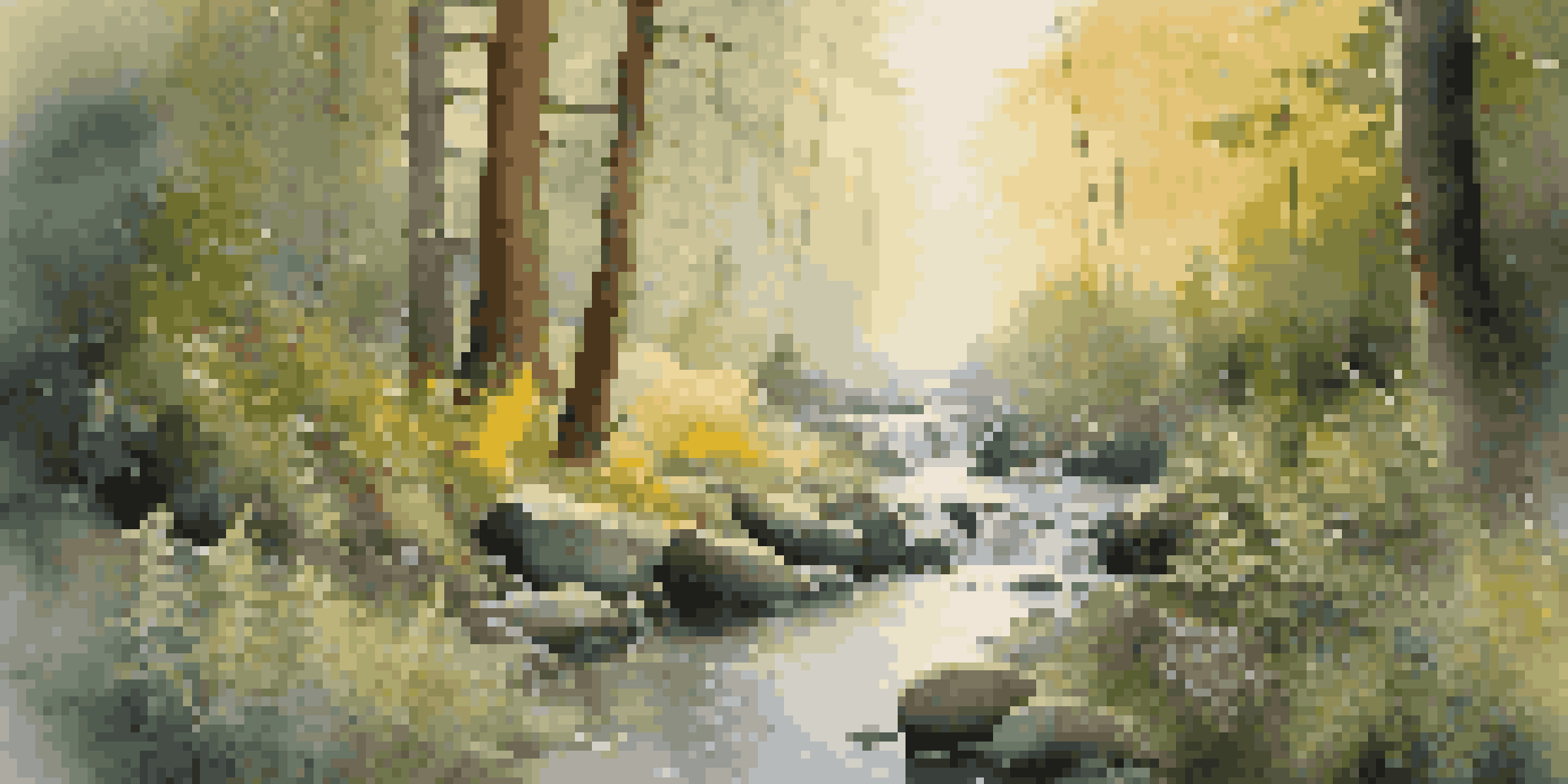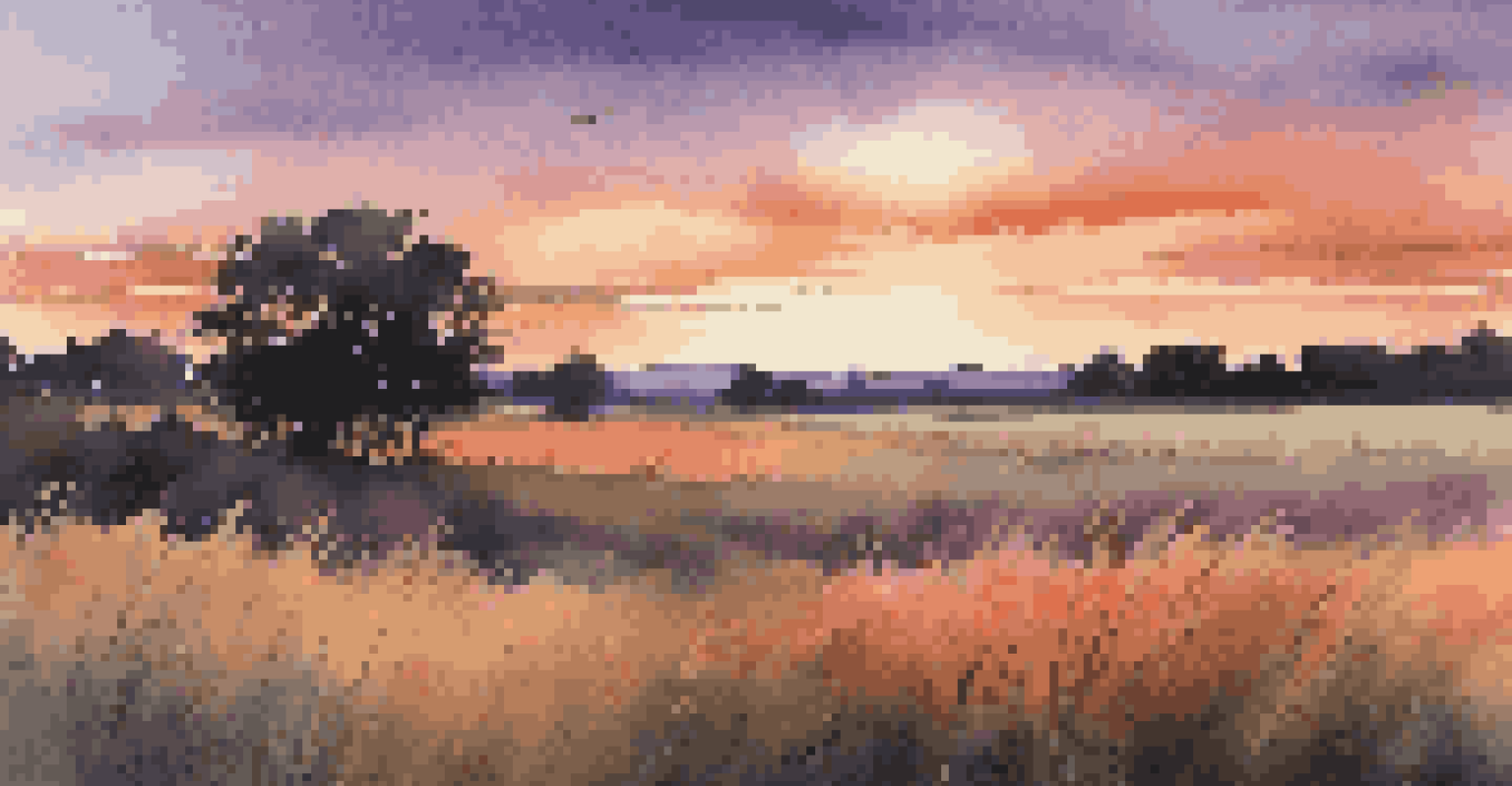Field Recording Techniques for Unique Sound Design Elements

Understanding the Importance of Field Recording
Field recording is an essential technique that allows sound designers to capture unique audio from the real world. It provides a treasure trove of sounds that can add depth and authenticity to any project. By stepping outside the studio, you can gather recordings that are rich in texture and character.
The beautiful thing about audio is that it can take you places you’ve never been, and remind you of places you’ve been before.
Imagine walking through a bustling city or a serene forest—each environment is filled with distinctive sounds that can evoke emotions and tell stories. These recordings can be used as foundational elements in your audio projects, setting the mood and enhancing the listener's experience. Moreover, they offer a way to break free from the limitations of synthesized sounds.
By incorporating field recordings, you can create a more immersive experience. Audiences are often drawn to sounds that feel real and relatable, making your work resonate on a deeper level. In the following sections, we’ll dive into specific techniques and tips for capturing these unique sounds.
Choosing the Right Equipment for Field Recording
Selecting the right gear is crucial for effective field recording. A good quality portable recorder, such as a handheld device, is essential for capturing high-fidelity sound. Additionally, using external microphones can significantly improve the clarity and richness of your recordings.

Consider the environment you’ll be recording in. For example, a shotgun microphone is great for isolating sounds from a distance, while a stereo microphone can capture a wider soundscape. Investing in a windscreen is also wise if you plan to record outdoors, as it helps minimize wind noise that can muffle your audio.
Field Recording Adds Authenticity
Capturing real-world sounds enriches projects, providing emotional depth and relatable audio experiences.
Ultimately, the best equipment depends on your specific needs and budget. Experimenting with different setups will help you discover what works best for your style. Remember, it's not just about having the most expensive gear; it's about understanding how to use it effectively to capture the essence of your surroundings.
Planning Your Field Recording Session
Preparation is key to a successful field recording session. Start by scouting locations and identifying the types of sounds you want to capture. Having a clear plan will save you time and help you focus on the unique elements of each setting.
Sound is the vocabulary of nature, and the sounds we record tell stories of the world around us.
Consider the time of day for your recordings. Early mornings or late afternoons often provide the best natural light and quieter environments. Additionally, be mindful of the weather, as it can greatly impact sound quality—rain can create unwanted noise, while calm days are ideal for capturing clearer audio.
Lastly, always have a backup plan. Sometimes, locations may not yield the sounds you expected, or unforeseen circumstances may arise. Being adaptable and having alternative locations or sounds in mind will ensure you make the most of your recording opportunities.
Techniques for Capturing Unique Sounds
To create truly unique sound design elements, try experimenting with various recording techniques. For instance, using close-miking techniques can capture intricate details that would otherwise be lost. This involves placing the microphone very close to the sound source, allowing for a more intimate sound.
Another technique is to manipulate the distance between the microphone and the source. Recording from different distances alters the sound's character, creating a diverse range of audio textures. Additionally, using multiple microphones can provide stereo imaging or multi-channel recordings that enhance the spatial dimension of your sound.
Equipment Selection is Essential
Choosing the right recording gear, such as microphones and portable recorders, is crucial for high-quality sound capture.
Don't hesitate to get creative with your approach. For example, you can record sounds by moving the microphone while capturing, which adds a dynamic element to your recordings. The more you experiment, the more likely you are to discover unique sounds that can add character to your projects.
Collecting Ambient Sounds for Atmosphere
Ambient sounds play a vital role in setting the mood and atmosphere of your audio projects. These background sounds can range from city noise to natural environments, each providing context and enhancing the listener's experience. When collecting ambient sounds, aim to capture longer recordings to give yourself more options during editing.
Pay attention to the dynamics of the environment. For instance, a busy marketplace offers a lively soundscape filled with chatter, footsteps, and market sounds, while a quiet forest provides a serene backdrop with rustling leaves and birds chirping. Mixing these elements can create rich, layered audio experiences.
Additionally, consider the time of day and seasonal changes when recording ambient sounds. Different times and seasons can dramatically alter the soundscape, offering fresh and varied auditory experiences. By thoughtfully incorporating ambient sounds, you can elevate your sound design to new heights.
Editing and Processing Field Recordings
Once you've captured your field recordings, the next step is editing and processing them for your projects. This involves cleaning up the audio, removing unwanted noise, and enhancing the overall quality. Basic editing software can help you trim, normalize, and adjust levels for optimal sound.
Experimenting with effects can transform your recordings, making them more unique and fitting for your project. For instance, adding reverb can create a sense of space, while EQ adjustments can emphasize or de-emphasize certain frequencies. These techniques allow you to tailor the recordings to suit your artistic vision.
Edit for Enhanced Audio Quality
Editing and processing field recordings can transform their quality, allowing for creative layering and unique sound design.
Finally, don't be afraid to combine and layer different recordings. This can lead to innovative sound design possibilities that are rich and textured. By mixing various elements, you can create a soundscape that captivates your audience and enhances the overall narrative of your project.
Incorporating Field Recordings into Sound Design
Field recordings can seamlessly blend into various sound design projects, adding depth and realism. Whether you're working on film, video games, or music, these recordings can enhance storytelling by providing an authentic backdrop. Start by identifying where the field recordings can create emotional impact within your project.
For instance, in a film scene, the sounds of a bustling street can ground the viewer in the setting, while the gentle rustle of leaves can evoke calmness during a reflective moment. Similarly, in video games, ambient sounds can enhance immersion, making players feel like they are truly part of the environment.

Moreover, field recordings can also serve as sound effects or transitions. Layering them with synthesized sounds can create unique audio elements that stand out. This fusion of real-world sounds with digital manipulation can lead to innovative and captivating sound design.